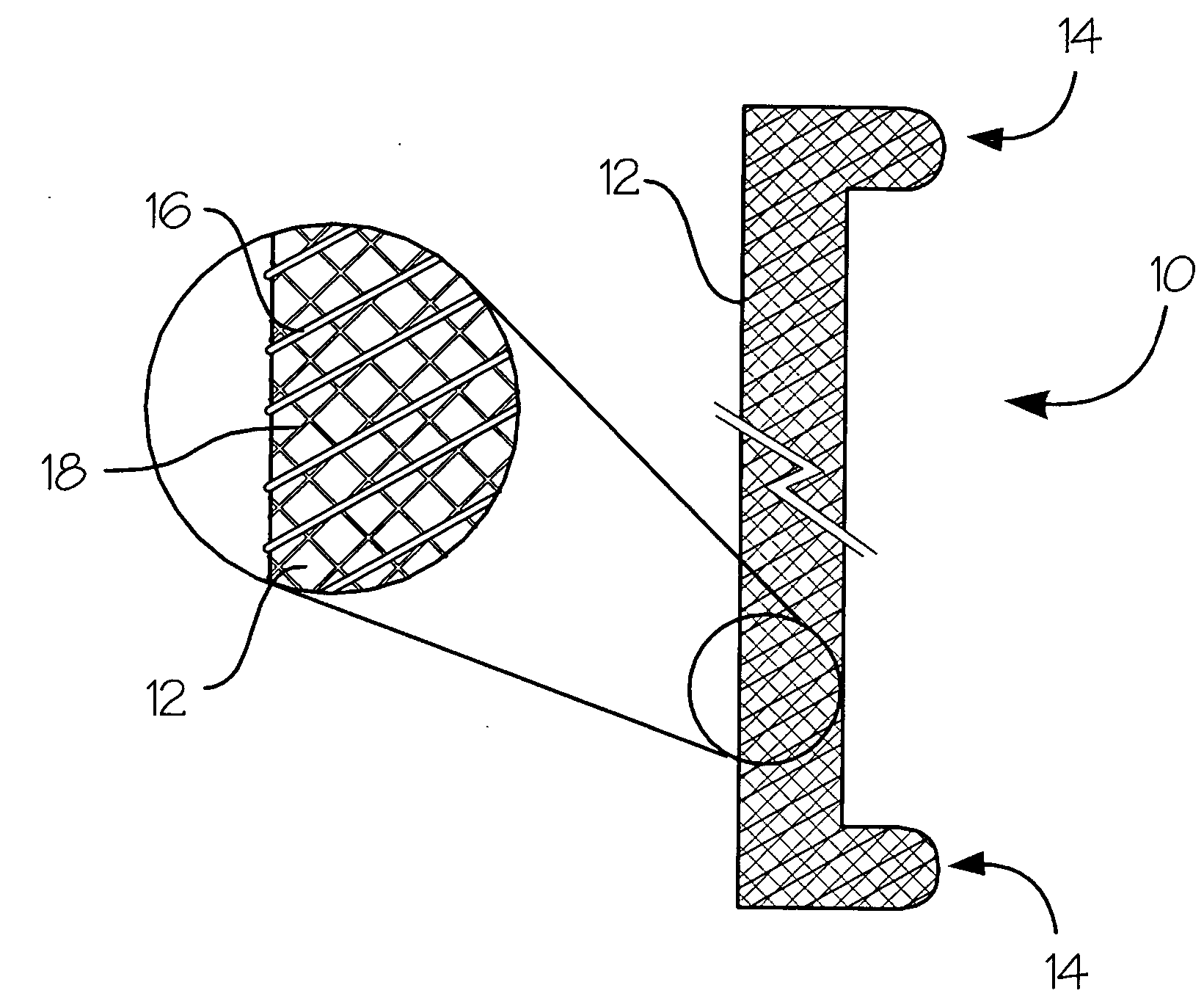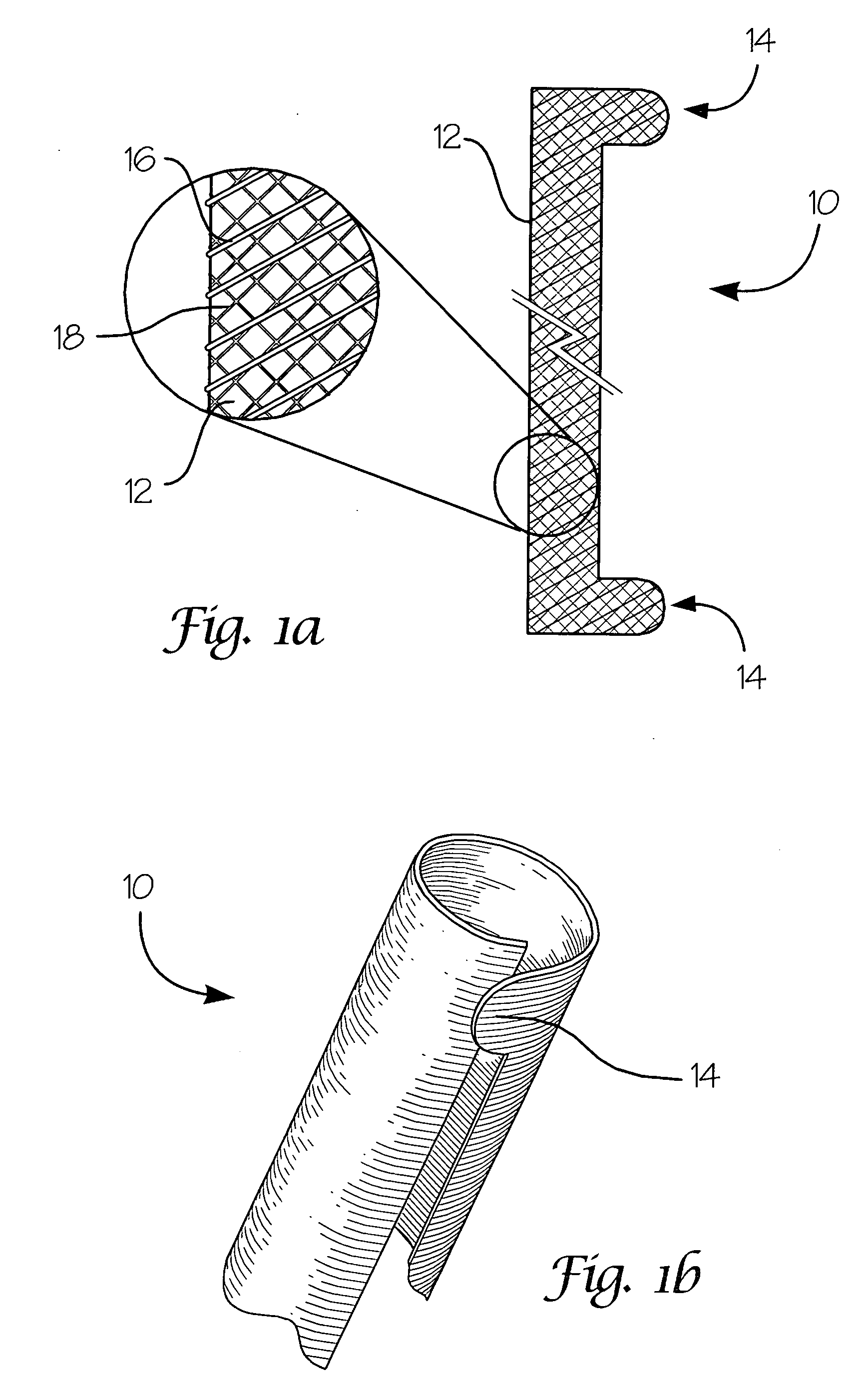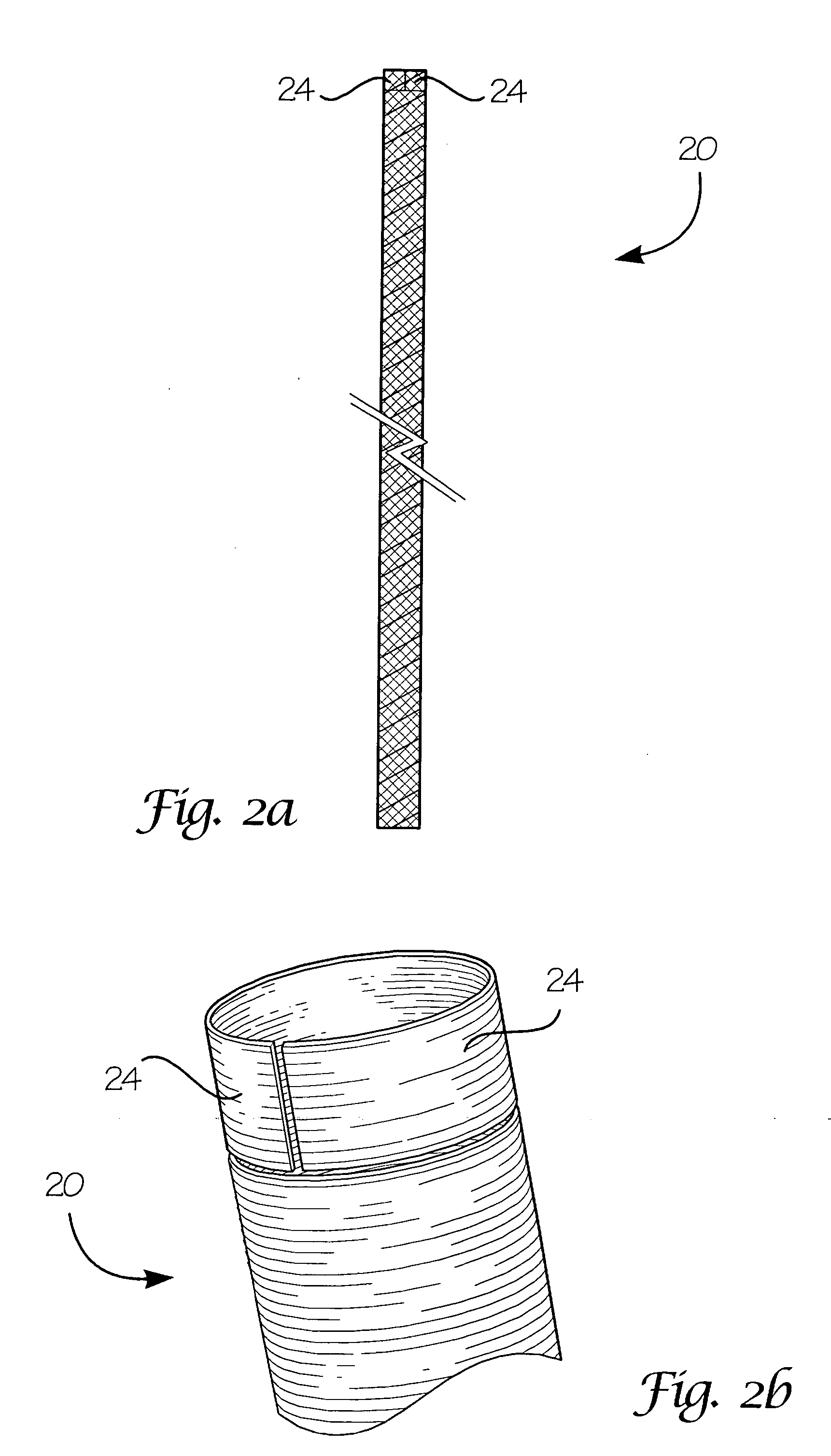Fiber-reinforced composite absorbable endoureteral stent
a fiber-reinforced composite and endo-urological technology, which is applied in the direction of prosthesis, catheters, blood vessels, etc., can solve the problems of not having a combination of absorbable endo-urological stents in the prior art, and achieve the effect of maintaining optimal patency
- Summary
- Abstract
- Description
- Claims
- Application Information
AI Technical Summary
Benefits of technology
Problems solved by technology
Method used
Image
Examples
example 1
Synthesis and Characterization of Polyethylene Glycol-ε-Caprolactone / Glycolide Block Copolymer for Use as a Swellable Elastomeric Film
[0081] The reaction apparatus was comprised of a 100 mL boiling flask, magnetic stir bar, and one 90° connector for a nitrogen inlet. An initial charge consisting of ε-caprolactone (0.4163 moles, 47.5 g), glycolide (0.0219 moles, 2.5 g), and polyethylene glycol (Mn=35 kDa, 1.243×10−4 moles, 4.38 g) was added to the kettle.
[0082] Using a temperature-controlled oil bath, the apparatus and its contents were heated to 50° C. and placed under vacuum for 45 minutes. The magnetic stir bar was stirring at a setting of 3.5. The system was then purged with nitrogen. To the final charge, a solution of 0.2 M of stannous octanoate in toluene (0.365 mL, 7.3×10−5 moles,) was added. The temperature was increased to 160° C. The reaction was maintained at 160° C. for 2 hours.
[0083] The polymer was characterized for molecular weight in terms of inherent viscosity in ...
example 2
Synthesis and Characterization of Crystalline Segmented l-Lactide Copolymers for Use as Elastomeric Films: A General Method
[0084] Crystalline segmented l-lactide copolymers comprising a triaxial copolymer comprising an amorphous core with crystalline grafts extending outward were prepared as per the general teaching of U.S. Pat. No. 6,462,169 (2002) and U.S. Pat. No. 6,794,485 (2004). For a typical copolymer (1) the core is made by the copolymerization of a mixture of trimethylene carbonate, ε-caprolactone, and glycolide in the presence of a stannous octanoate and triethanolamine as the catalyst and initiator, respectively; and (2) the crystalline end-grafts are formed by reacting the core copolymer with a mixture of l-lactide and ε-caprolactone. The resulting copolymer is characterized as described in Example 1.
example 3
Preparation of Solutions for Film Casting: A General Method
[0085] A polymer from Example 1 or 2 was weighed and dissolved in acetone. Ratio of the solute to solvent was altered until desired consistency was achieved. A typical solution contained 4 percent polymer.
PUM
| Property | Measurement | Unit |
|---|---|---|
| Fraction | aaaaa | aaaaa |
| Fraction | aaaaa | aaaaa |
| Time | aaaaa | aaaaa |
Abstract
Description
Claims
Application Information
 Login to View More
Login to View More - R&D
- Intellectual Property
- Life Sciences
- Materials
- Tech Scout
- Unparalleled Data Quality
- Higher Quality Content
- 60% Fewer Hallucinations
Browse by: Latest US Patents, China's latest patents, Technical Efficacy Thesaurus, Application Domain, Technology Topic, Popular Technical Reports.
© 2025 PatSnap. All rights reserved.Legal|Privacy policy|Modern Slavery Act Transparency Statement|Sitemap|About US| Contact US: help@patsnap.com



